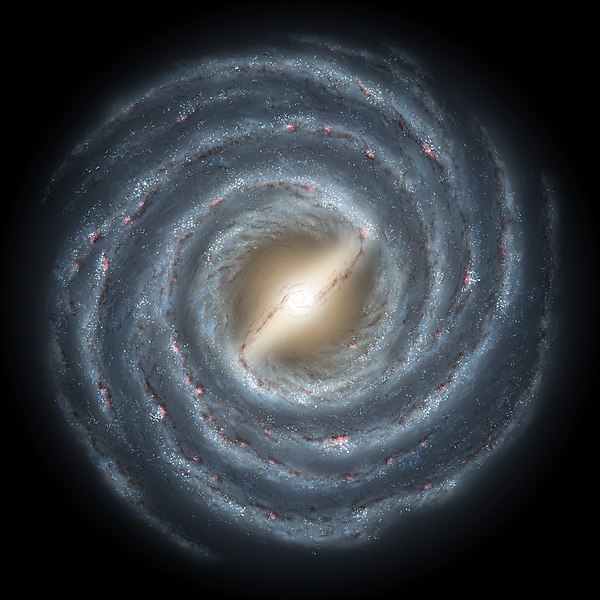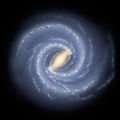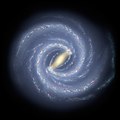Òbrôzk:Milky Way 2005.jpg

Miara pòdzérkù – 600 × 600 pikslów. Jinszy rozdzélnotë: 240 × 240 pikslów | 480 × 480 pikslów | 768 × 768 pikslów | 1024 × 1024 pikslów | 1350 × 1350 pikslów.
Pierwòtny lopk (1350 × 1350 pikslów, miara lopka: 955 KB, ôrt MIME: image/jpeg)
Historëjô lopka
Klëkni na datum/czas, abë òbaczëc jak wëzdrzôł lopk w tim czasu.
| Datum/Czas | Miniatura | Miara | Brëkòwnik | Òpisënk | |
|---|---|---|---|---|---|
| aktualny | 23:55, 19 łżë 2014 |  | 1350 × 1350 (955 KB) | SenseiAC | different image = different name. The "newer" one will therefore be moved to "Milky Way 2008" |
| 22:47, 4 cze 2008 |  | 5600 × 5600 (4,35 MB) | Ashill | {{Information |Description= Like early explorers mapping the continents of our globe, astronomers are busy charting the spiral structure of our galaxy, the Milky Way. Using infrared images from NASA's Spitzer Space Telescope, scientists have discovered th | |
| 10:01, 16 séw 2005 |  | 1350 × 1350 (955 KB) | Shizhao | Barred Spiral Milky Way Illustration Credit: R. Hurt (SSC), JPL-Caltech, NASA From http://apod.gsfc.nasa.gov/apod/ap050825.html {{PD-USGov-NASA}} |
Wëkòrzëstanie lopka
Hewò je starna jakô òdwòłëje sã do negò lopka:
Globalné wëzwëskanié lopka
Nene lopk je téż brëkòwnóny w jinnych ùdbach Wiki:
- Wëzwëskanié w af.wikipedia.org
- Sonnestelsel
- Wikipedia:Voorbladartikels 2006
- Magellaanse Stroom
- Melkweg
- Wikipedia:Voorbladartikel week 9 2006
- Gebruiker:Voyageur
- Sjabloon:Melkweg
- Pisces-Cetus-superswermkompleks
- Boötes I-dwergsterrestelsel
- Boötes III-dwergsterrestelsel
- Canes Venatici I-dwergsterrestelsel
- Canes Venatici II-dwergsterrestelsel
- Canis Major-dwergsterrestelsel
- Carina-dwergsterrestelsel
- Draco-dwergsterrestelsel
- Fornax-dwergsterrestelsel
- Monoceros-ring
- Hercules-dwergsterrestelsel
- Leo I-dwergsterrestelsel
- Leo II-dwergsterrestelsel
- Leo IV-dwergsterrestelsel
- Leo V-dwergsterrestelsel
- Phoenix-dwergsterrestelsel
- Pisces I-dwergsterrestelsel
- Pisces II-dwergsterrestelsel
- Sculptor-dwergsterrestelsel
- Sagittarius- Elliptiese Dwergsterrestelsel
- Sextans-dwergsterrestelsel
- Ursa Major I-dwergsterrestelsel
- Ursa Major II-dwergsterrestelsel
- Ursa Minor-dwergsterrestelsel
- Virgo-sterrestroom
- Scutum-Centaurus-arm
- Perseus-arm
- Norma-Cygnus-arm
- Orion-Cygnus-arm
- Carina-Sagittarius-arm
- Magellaanse Brug
- Segue 3
- Willman 1
- Koposov I
- Koposov II
- Crater 2-dwergsterrestelsel
- Groot Magellaanse Wolk
- Klein Magellaanse Wolk
- Wëzwëskanié w als.wikipedia.org
- Wëzwëskanié w ar.wikipedia.org
Pòkôżë lëstã glonal;negò brëkwaniô negò lopka.








